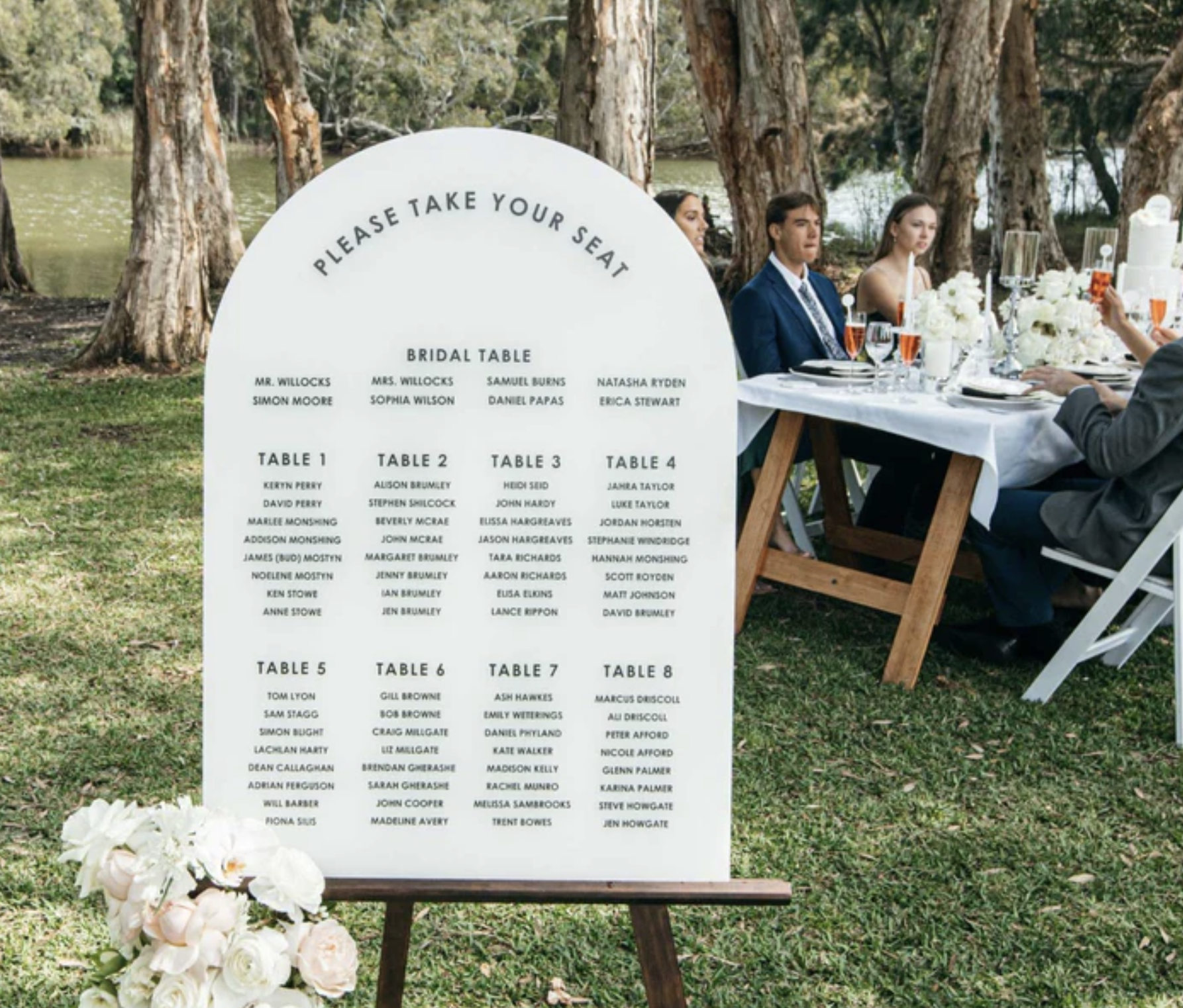Planning your dream wedding is exciting—until you reach the one task that has stumped even the most organized couples: the seating chart.
With so many people to consider (family, friends, coworkers, plus-ones, and maybe a few feuding relatives), arranging who sits where can feel like a puzzle with no right answer. But don’t worry—you’re not alone. And yes, there is a way to do this without losing your mind.
Here’s everything you need to know to build the perfect wedding seating chart—one that keeps everyone happy, avoids awkward moments, and helps your day flow seamlessly.
Do You Even Need a Seating Chart?
Let’s start here. If you’re planning a laid-back backyard wedding with buffet-style food, you might get away with open seating. But in most cases—especially for formal weddings or large guest lists—a seating chart is a must.
Why it helps:
Makes mealtime smoother for caterers and servers
Prevents confusion and awkward seat-saving
Helps family members feel cared for
Gives structure and flow to your reception
In short: unless your guest list is under 30 and your vibe is super casual, having a seating chart is one of the smartest decisions you can make.
Seating Chart vs. Escort Cards vs. Place Cards—What’s the Difference?
Let’s clear this up:
Seating chart: A big visual board (or digital screen) that tells each guest which table they’re at.
Escort cards: Small cards displayed alphabetically that guests pick up to find their table.
Place cards: Cards set at the table showing each guest their exact seat.
For many couples, using a seating chart with place cards at each table works great. It’s thoughtful, keeps things moving, and helps guests settle in quickly.
Start with the Floor Plan
Before assigning seats, you need to understand your space. Ask your venue for a detailed floor plan or use an online tool like WeddingWire or Zola.
Here’s what to look for:
Where’s the dance floor?
Where will the DJ or band be?
Are there any columns or corners to avoid?
Is the space accessible for older guests or those with mobility needs?
Pro tip: Keep close family near the head table or dance floor. Put kids near exits or activity zones. And don’t seat Grandma next to the speakers.
Group Your Guests First—Then Fine-Tune
Trying to place 150 guests one by one is overwhelming. Instead, group them first:
Immediate family
Extended family
Friends from high school or college
Work friends
Out-of-town guests
Once grouped, it’s easier to mix and match people who know each other—or who would get along well. For example, seating your college roommate with your childhood best friend may spark a fun connection.
Handle the Tricky Situations with Care
Weddings are emotional. Here’s how to avoid drama before it starts:
Divorced parents? Give them separate tables with equal visibility.
Guests who don’t get along? Keep them apart, even if it means reshuffling.
Singles or shy guests? Seat them with outgoing or familiar faces—not at a “singles” table.
New plus-ones? Place them with their partner’s group so they feel included.
The goal is to make everyone feel comfortable—even if that means getting creative.
Pick a Table Style That Works for You
The shape and style of your tables can make a big difference.
Round tables (usually 8-10 guests)
Encourage easy conversation
Perfect for mixed friend groups
Long banquet tables
Great for family-style meals
Can be harder to seat guests who don’t know each other
Sweetheart table (just the couple)
Gives you a quiet moment to connect during dinner
Head table (with the wedding party)
Great for group photos and energy
And don’t forget about naming your tables! Instead of boring numbers, consider using:
Kansas City neighborhoods
Favorite vacation spots
Song titles or inside jokes
Use the Right Tools (and Ditch the Spreadsheets)
There’s no need to build your chart from scratch. Here are a few tools couples love:
WeddingWire Seating Tool – drag-and-drop interface, free to use
Zola – links to your guest list and registry
These platforms help you:
Upload guest names
Move people easily if plans change
Share the chart with your venue or caterer
Prefer analog? Sticky notes on a big poster board work surprisingly well for visualizing groups.
Real Wedding Hacks That Actually Work
These tips come straight from couples who’ve done it:
Start with VIP tables: immediate family, wedding party, close friends
Use color coding when grouping guests by relationship
Keep one “wild card” table with a few open seats for surprises or no-shows
Don’t aim for perfection—aim for comfort and flow
Remember: people won’t remember exactly who they sat next to—but they will remember if they felt welcomed.
Final Checklist Before Printing It All Out
Before you click print: ✅ Finalize your guest list and RSVPs
✅ Confirm meal choices and dietary restrictions
✅ Double-check name spellings
✅ Share the seating chart with your planner, caterer, and venue
✅ Bring a printed version and a digital backup just in case
Add Fun & Personal Touches
Seating doesn’t have to be boring. Try these ideas:
Custom illustrated seating chart board
Mini bottles of champagne with name tags as escort cards
QR code linking to a digital seating plan (great for eco-friendly weddings!)
Trivia cards or conversation starters at each table
Pet-themed tables featuring your dog’s face (yes, really)
These extra touches turn logistics into moments your guests will talk about long after the cake is cut.
The Secret Weapon: The Wild Card Table
This might be the best-kept secret in wedding planning.
Designate one table as your “wild card” table—a mix of open seats or easygoing guests. It’s perfect for:
Last-minute changes
Guests who bring surprise plus-ones
People who switch seats mid-reception
It’s your insurance policy—and your stress reliever.
In the End: Thoughtful > Perfect
The truth? You can’t make everyone 100% happy—and that’s okay.
What you can do is make thoughtful choices that show your guests you care. Whether you seat old friends together or mix people who’ve never met, your guests will feel the love you put into planning.
And if you’re hosting your wedding at The Guild, our team is here to help make your seating chart—and every part of your day—as smooth and stress-free as possible.
You’ve got this. Now go finish that chart—and get back to the fun stuff.
Need help planning your layout at The Guild?
Contact our team for expert advice and a custom floor plan. We've helped hundreds of couples pull it off—with joy, ease, and zero meltdowns.





